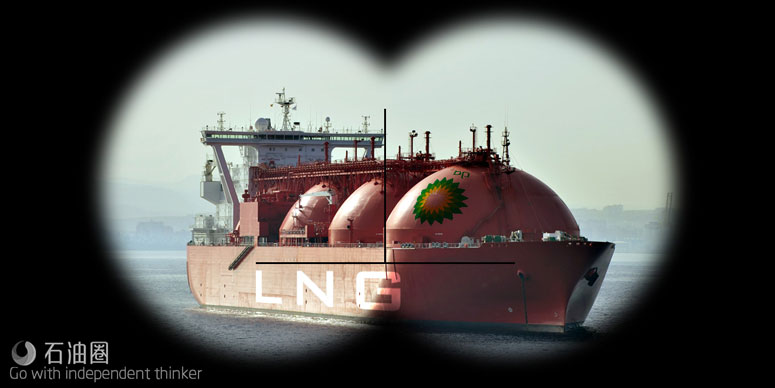The main rationale of BP plc’s decision to move its U.S. Lower 48 headquarters from Houston to Denver is to be closer to two-thirds of its operated oil and natural gas production and proved reserves in the Rocky Mountain region.
Could BP’s decision signal a revival for the Rockies exploration and production (E&P) investment and activity, particularly for natural gas? After a surge of activity from 2005 to 2008, Rockies investment and production started to decline, partly due to competition from Marcellus shale gas production. The long-term bullish outlook for U.S. natural gas at home and abroad could lift gas prices and natural gas E&P in the United States, including the Rockies.
With natural gas comprising about 80 percent of BP’s Lower 48 portfolio, the company has not only been very focused on improving efficiency and its cost structure, but using emerging technologies such as multi-lateral drilling and data analytics to maintain a competitive, sustainable, safe business, even at lower commodity prices, BP spokesperson Brett Clanton told Rigzone.
At the same time, the company is participating in the transition to a low-carbon economy. By the end of the decade, BP expects its 60 percent of its portfolio to be natural gas assets, up from the current 50 percent, as new projects come on stream, BP CEO Bob Dudley said in an October 2016 speech. This includes projects in Trinidad & Tobago, Oman, Egypt and the Shah Deniz 2 project in Azerbaijan.
“The scale of energy demand means that the world will continue to need energy from all sources, but the balance of the energy mix needs to change,” Dudley stated.
The company is seeking to derive new value from its five Lower 48 business units, including its Green River and San Juan Basin assets, through innovative well design and techniques, BP said in a June 2016 presentation. BP is pursuing not only conventional vertical drilling, but single tight oil and gas horizontal wells, winerack horizontal wells, and both stacked and coplanar multi-lateral horizontal wells.
In 2015, BP drilled at its North – Greater Green River assets its first horizontal well in eight years. In June 2016, the company spud its first multi-lateral well at Green River, and has been aggressively building its drilling inventory there. BP estimates its North – Green River Basin to hold potential resources of 1.4 billion barrels of oil equivalent (Bboe); these resources include reservoirs with dry gas, wet gas, condensate and oil.
BP’s San Juan Basin assets are estimated to hold 2.1 Bboe of resource potential. In the Fruitland coal horizon, BP is targeting coalbed methane dry gas. The company is also targeting wet gas in the Mesaverde horizon, gas and oil in the Mancos marine source rock and wet gas in the Dakota marine sands. The company is drilling more and longer laterals, and successfully drilled a tri-lateral well that accessed 14,600 feet of coal.
The company is also an early mover in the San Juan Basin Mancos play, which has tremendous potential, according to BP. It has identified approximately 1,600 horizontal drilling locations, and is evaluating the potential of the play’s oil window.
From a regional standpoint, Wood Mackenzie’s outlook is calling for natural gas growth outside of the Rockies, Ryan Duman, senior research analyst with the firm’s U.S. Lower 48 Upstream Group, told Rigzone in an interview. At the same time, public oil and gas companies have been heavily rewarded by Wall Street for investments in tight oil and liquids assets versus gas due to commodity prices. As a result, many public companies divested their Rockies gas assets or shied away from investment, Duman said.
“But that’s not saying it was a bad decision for BP to move their [Lower 48] headquarters there,” Duman said. “Nor have Rockies gas assets been completely forgotten. Instead of public companies, smaller, private equity-back firms are investing in the Rockies gas. Potentially, continued delays in northeast U.S. pipeline projects could not only create opportunities for Haynesville shale gas, but possibly the Rockies. ”
BP is likely taking a longer-term view versus a short-term view of natural gas, Anthony Scott, partner with BTU Analytics LLS and managing director of analytics, told Rigzone. As gas demand grows, BTU Analytics sees a greater call for Rockies gas in the long-term, but not the short-term outlook. Historically, Rockies natural gas activity has occurred at prices higher than $4 per thousand cubic feet; prices have not consistently been at this level since the 2005-2008 timeframe. Not only did the start of Marcellus shale gas production depress Rockies investment, so did the increase in associated gas coming from the Eagle Ford, Permian, and Oklahoma oil plays, which boosted supply and depressed gas prices.
Private equity continues to express interest in longer-lived shallow decline assets in the Rockies. In the long-term, continued displacement of coal by natural gas in the United States and abroad will likely boost demand for Rockies gas, Scott said.
“But in the next two to three years, it’s hard to see that happening unless the horizontal drilling that BP and others are pursuing in the Rockies bear enough fruit to really change development costs,” Scott said.
BP is using techniques it’s used globally – and even offshore – and trying to apply them to onshore horizontal development to lower cost and boost productivity across a number of Rockies basins, including oil, Scott said. BP is trying to lower development costs and reduce the environmental footprint of these operations. Minimizing surface impact can go a long way for operator relations with the Bureau of Land Management, Scott said.
“I think it’s certainly a viable region,” Andrew Slaughter, executive director of the Deloitte Center for Energy Solutions, told Rigzone. “The resource space is huge, and as the [natural gas] market grows, Rockies supply will find markets.”
In terms of Rockies oil, the Denver-Julesberg (DJ) Basin is the only area expected to see robust growth this year, Erika Coombs, senior energy analyst with BTU Analytics, told Rigzone. Traditional players like Anadarko Petroleum Corp. and Noble Energy Inc. will continue to deploy capital into the DJ Basin, the core of which is highly economic. The Powder River Basin, once expected to be a major growth area, has some wells that are currently economic, but not enough to significantly growth production without higher prices. The unique properties of the Uinta, a major Rockies oil play, the Uinta, will require higher prices for E&P activity to grow.
Oil and natural gas liquids production should grow in the Niobrara this year, Thomas McNulty, director of Navigant Consulting’s transaction advisory services practice, told Rigzone. However, additional midstream capacity is needed to deliver resources to market.
“This is a tight shale play that has been expensive, but the efficiencies that producers have realized make much of the production work out at current prices,” McNulty said.
He also believes that federal and state governments will start to argue over regulatory issues, now that President Donald Trump occupies the White House. This change also could impact production decisions.
Sleeper Demand Seen for Natural Gas
Oil prices have dominated headlines in recent years. However, analysts are bullish on natural gas’ long-term outlook, thanks not only to domestic power generation and industrial demand, but demand for U.S. liquefied natural gas (LNG) exports and gas pipelines exports to Mexico. According to a May 2016 U.S. Energy Information Administration report, non-Organization for Economic Cooperation and Development countries will account for 76 percent of the growth in gas consumption through 2040. Shale gas, tight gas and coalbed methane will grow in importance not only for U.S. gas supplies, but also for China and Canada.
Global climate change discussions will also boost producer incentive for more exposure to gas. The expansion of the Panama Canal to handle some LNG vessels, and the development of liquid or semi-spot LNG markets, will also enable the LNG market to grow, analysts said.
Demand for U.S. LNG exports is expected to grow as the global LNG market diversifies away from a being relatively small market with long-term, high-volume buyers, Slaughter commented. Buyers have expressed an appetite for supply diversification and commercial term diversification.
Demand for U.S. gas in Mexico already is growing, particularly in northern Mexico, where industry would like more access to U.S. gas. Mexico’s focus on offshore oil means it will be some time before the nation develops in indigenous gas resources. Until then, it’s easier for Mexico to rely on gas supply from places like the Eagle Ford shale in South Texas and West Texas.
Air emission rules are creating markets for LNG in marine fuel and transportation. For LNG to further saturate the marine market, ships will need to be retrofitted for LNG. At the same time, LNG fueling stations will need to be built in many more ports and places to make it pervasive. Time also will be needed to implement the fueling infrastructure and equip trucks with the right train technology to burn LNG. The risk aversive nature of fleet operators, the price spread between diesel and natural gas prices, and resale value of LNG vehicles, also must be addressed for LNG vehicle demand to grow, Slaughter noted.
International demand for U.S. LNG exports and gas pipeline exports could accelerate in the 2017-2021 timeframe. However, BTU Analytics is concerned about the short-term utilization rate for U.S. LNG and pipeline facilities.
“If you take the nameplate capacity, it’s an impressive number of more than 9 billion cubic feet per day (Bcf/d) of LNG exports and more than 8 Bcf/d into the Mexican market,” Scott said.
However, Mexico isn’t a large downstream market in its own right; many of the pipeline projects are designed to support Mexican demand growth over the next 25 years, not necessarily the next five years.
Without a major production surge, adequate pipeline capacity exists today in the Rockies due to a major pipeline buildout occurred from 2005 to 2009. Should production grow significantly, more midstream facilities will be needed to get not only U.S. oil, but U.S. gas supplies to market, McNulty said.
“The multiplier effect with natural gas becoming a more preeminent fuel is that it could trigger merger and acquisition (M&A) activity,” McNulty said.
Navigant Research believes 2017 M&A transactions could double from 2016 activity level as companies seek to drive cost efficiency.
“You often hear natural gas referred to as the transition fuel for the move from fossil fuels to renewables,” Duman said. “At the end of the day, there is still going to be a need for natural gas. A generalized way to look at it is at natural gas will foot the bill least some level of baseload capacity for power generation. As the cost of supply continues to come down, natural gas is ultra-competitive with anything that’s out there.”


 石油圈
石油圈
